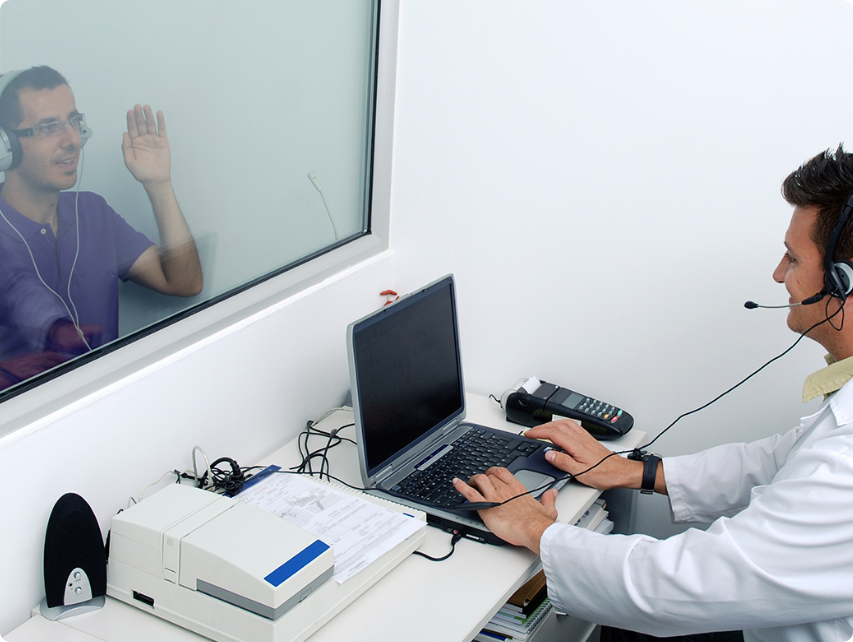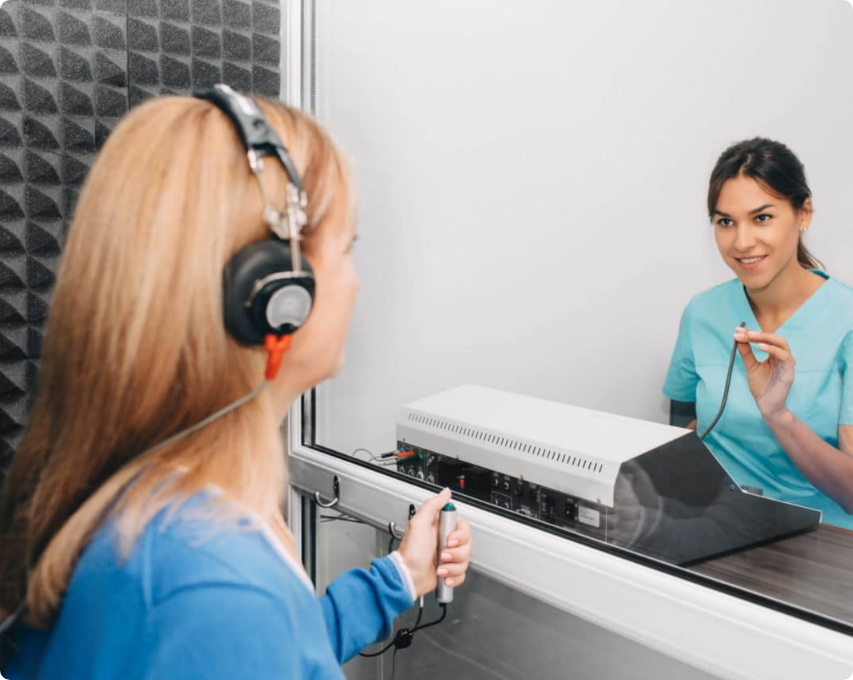What is the P.T.A. test?
It’s one of the most common hearing exams out there. Our Audiologists will ask you to sit in a soundproof room or booth while wearing headphones. They will use a machine known as an audiometer to calculate the volume level you need to hear a variety of various pitches. Each ear will be examined independently, and you will be exposed to a series of tones that will get louder and quieter as the doctor increases the volume level. You need to press a button or raise your hand every time you hear a tone — even if it is extremely faint — to proceed.
Additionally, P.T.A. is beneficial to other types of hearing tests, such as the click auditory brainstem response. P.T.A. employs frequency-specific pure tone to provide location-specific responses by giving ear-specific thresholds to determine the hearing loss in the population.







